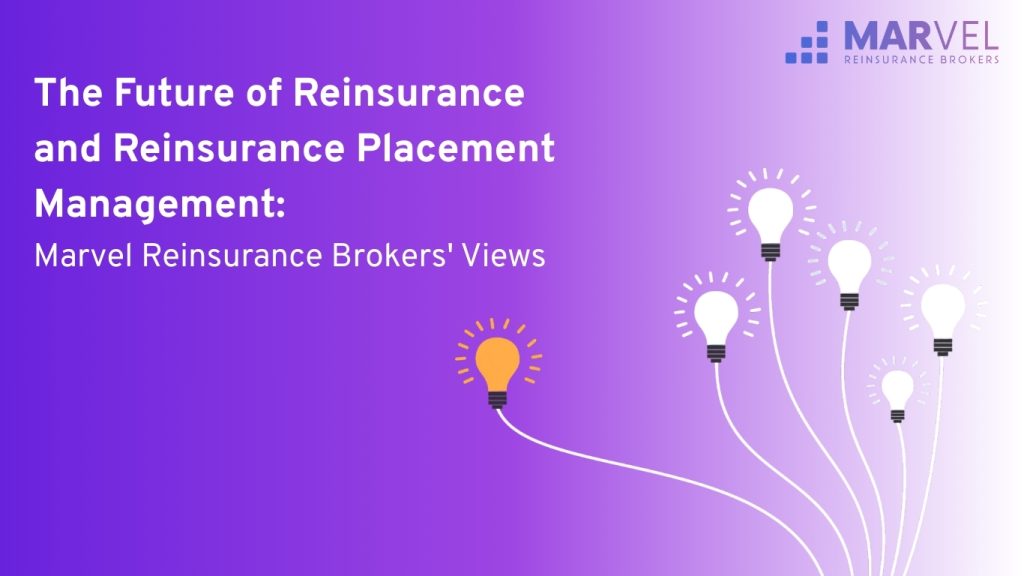
The reinsurance landscape is changing fast. The reinsurance industry is at a pivotal juncture, facing a confluence of challenges and opportunities that are reshaping its landscape. Companies face climate change risk, cyber-attacks, and global conflicts. Technology innovation and emerging regulations also shape reinsurance purchasing and selling. Reinsurance placement can have a great impact on how well insurers indemnify themselves. Marvel Reinsurance Brokers stands out as a leader in creating smart, innovative ways to handle reinsurance placement. This article explores how the future will be shaped by new tools, data, and stronger partnerships. From evolving risk profiles and technological advancements to shifting market dynamics, the future of reinsurance demands adaptability, innovation, and strategic foresight. In this dynamic environment, reinsurance brokers like Marvel Re play a crucial role in navigating complexities and facilitating effective risk transfer.
The Evolving Landscape of Reinsurance Industry
Evolving Risk Landscape
The nature of risk is in a state of constant evolution and change, shaped by dynamic factors including:
Climate Change: Increased frequency and severity of natural catastrophes like hurricanes, floods, and wildfires are placing greater strain on insurers and reinsurers.
Cyber Risk: The growing interconnectedness of digital systems has led to a surge in cyberattacks, posing significant financial and reputational risks.
Pandemics: The COVID-19 pandemic highlighted the vulnerability of global systems to large-scale health crises, leading to substantial losses for insurers.
Emerging Technologies: New technologies like artificial intelligence, autonomous vehicles, and nanotechnology introduce novel risks that are difficult to quantify and manage.
Industry Trends Shaping the Future
The reinsurance world is seeing some key developments. Climate change is bringing bigger natural disasters, which cause more claims. Cyber risks are growing with every new attack. Political risks create uncertainty across markets. All of these developments lead to higher demand for many reinsurance products. Insurers need solutions that are adaptable and can act quickly. Recent reports from Swiss Re show that global insured losses from natural disasters doubled over the past decade, mirroring the rising risks.
Regulatory and Economic Influences
New laws worldwide also change how reinsurance companies do business. Regulators demand tighter rules and clearer disclosures to avert financial shocks. Inflation, on the other hand, raises claims costs, making it more expensive to cover risks. The volatile economy affects how much reinsurance capacity is out there, along with its cost. Insurers say these conditions push reinsurers to be more careful in pricing, and they look for ways to better manage their exposure.
The Increasing Role of Alternative Capital
Alternative sources of capital like insurance-linked securities (ILS), hedge funds, and other investors are occupying increasing space left by traditional reinsurers. New capital is being introduced into the market by these funds. For example, catastrophe bonds allow investors to engage in insurance risk for higher yields. While they add capacity, risks also come along with them — like if market conditions change, investors may pull out. Both tremendous opportunities and challenges are perceived by the industry with these new sources of funding.
Innovations in Reinsurance Placement Strategies
Digital Platforms and Tech-Driven Solutions
Technology is changing reinsurance placement. Online platforms are connecting insurers and reinsurers faster than ever. These platforms reduce paperwork and save time. Artificial intelligence (AI) and machine learning help analyze big data to make more accurate risk assessments. Real-time data is being exchanged by some firms now to speed up placements. For instance, a recent reinsurance deal was signed on a digital platform where data was transparent and real-time.
Data Analytics and Predictive Modeling
Smarter reinsurance is based on one key: data. Advanced analytics enable underwriters to be more perceptive regarding risks. IoT devices and sensors now feed real-time data from homes, factories, and automobiles. Real-time data feeds directly into pricing models and risk selection frameworks. Those brokers who leverage these tools can craft more precise solutions for clients. Simple metrics such as the use of granular weather data or telematics can better forecast future claims.
Customized and Parametric Reinsurance Products
There is a growing need for tailor-made reinsurance products. Clients no longer want off-the-shelf policies but coverage that suits their specific needs. An example of this is parametric reinsurance, which pays out on the basis of pre-agreed events, e.g., a hurricane of a certain wind speed. This makes claims easier and faster. New products like weather-based triggers or crisis-specific products are today the norm in the market.
Managing Reinsurance Placement: Best Practices and Strategy
Reinsurance Brokers and Their Role
By providing these value-added services, Marvel Re facilitates reinsurance placements. Their team uses deep market knowledge and technical skill to find the best solutions. They work closely with the client to understand risks and formulate strategies to suit. Being technically savvy and well-connected helps them find options that others might not. Their experience gives clients confidence in their reinsurance approach.
Building Effective Risk Transfer Solutions
A smart portfolio diversifies the risks to avoid big hits. Brokers work together with reinsurers from around the world, developing flexible and diverse plans. Brokers believe in transparency, so clients know what they get. Good communication helps to manage expectations and build trust. For example, a combination of traditional reinsurance and parametric covers can offer great coverage in different situations.
Managing Challenges in Placement
Market constraints such as capacity shortage and rising prices can make placement even more difficult. Brokers need to think outside the box when reinsurers exercise caution. Reputational and compliance risk also looms large. Staying one step ahead entails being prepared, developing contingency plans, and remaining in close communication with reinsurance counterparts. Acting early and being apprised of market turns forestall surprises down the line.
In this evolving landscape, reinsurance brokers like Marvel Re play a critical role in helping insurers navigate complexities and secure optimal reinsurance protection. Marvel Re leverages its expertise, market knowledge, and global network to:
- Assess Risk: Marvel Re collaborates with insurers to evaluate risk exposures and determine tailored reinsurance solutions.
- Source Capacity: The broker taps into its extensive network of reinsurers to find the best possible coverage at competitive prices.
- Structure Solutions: Marvel Re designs customized reinsurance solutions that address the specific needs of its clients, taking into account factors such as risk appetite, financial constraints, and regulatory requirements.
- Negotiate Terms: The broker negotiates with reinsurers on behalf of its clients to secure favorable terms and conditions.
- Provide Market Insights: Marvel Re keeps its clients informed about the latest market trends, regulatory developments, and emerging risks.
By providing these value-added services, Marvel Re helps insurers to:
- Enhance Financial Stability: Reinsurance protects insurers from large losses, ensuring their ability to meet their obligations to policyholders.
- Optimize Capital Management: Effective reinsurance strategies can help insurers to free up capital and improve their financial performance.
- Expand Business: Reinsurance enables insurers to underwrite more business and enter new markets.
- Manage Volatility: Reinsurance helps to smooth out earnings volatility, providing greater financial stability.
The Future Outlook:
The future of reinsurance will be characterized by:
- Greater use of technology and data analytics
- Increased focus on customized and innovative solutions
- Deeper integration of alternative capital
- Continued consolidation and globalization
Strategic Recommendations
To remain ahead, businesses ought to prioritize innovation and nimbleness. Making data-guided decisions through the utilization of data-driven insights is smarter. Having partnerships with tech companies or other capital providers opens up additional possibilities. Training personnel is essential because new processes and tools call for proficient teams. In the coming ten years, a more digital, agile, and data-intensive reinsurance market can be anticipated. Businesses that adopt these developments will have an upper hand in the competitive market and serve their customers better.
Conclusion
The future of reinsurance is built on three pillars: new technology, better data, and strong relationships. Those who adapt early to change will excel in managing complex risks and meeting clients’ needs. Marvel Reinsurance Brokers is leading the way by combining innovation and expertise. For the industry players, embracing digital solutions and partnership collaborations isn’t an option — it’s imperative. Organizations that demonstrate adaptability and market responsiveness will be well-positioned and will be future successful. The moment to take bold steps in reinsurance placement and secure a solid tomorrow is here.

